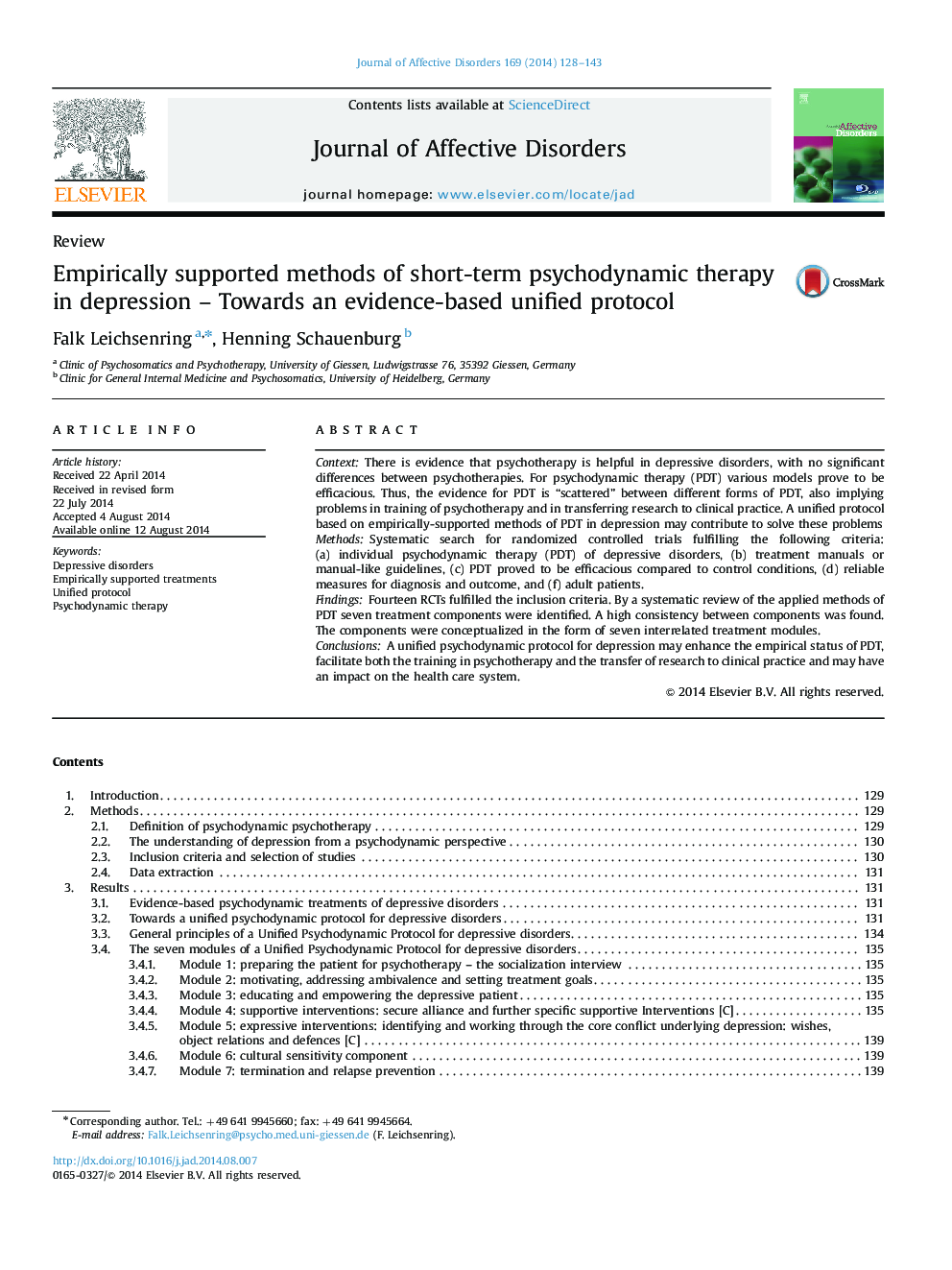| Article ID | Journal | Published Year | Pages | File Type |
|---|---|---|---|---|
| 6232466 | Journal of Affective Disorders | 2014 | 16 Pages |
ContextThere is evidence that psychotherapy is helpful in depressive disorders, with no significant differences between psychotherapies. For psychodynamic therapy (PDT) various models prove to be efficacious. Thus, the evidence for PDT is “scattered” between different forms of PDT, also implying problems in training of psychotherapy and in transferring research to clinical practice. A unified protocol based on empirically-supported methods of PDT in depression may contribute to solve these problemsMethodsSystematic search for randomized controlled trials fulfilling the following criteria: (a) individual psychodynamic therapy (PDT) of depressive disorders, (b) treatment manuals or manual-like guidelines, (c) PDT proved to be efficacious compared to control conditions, (d) reliable measures for diagnosis and outcome, and (f) adult patients.FindingsFourteen RCTs fulfilled the inclusion criteria. By a systematic review of the applied methods of PDT seven treatment components were identified. A high consistency between components was found. The components were conceptualized in the form of seven interrelated treatment modules.ConclusionsA unified psychodynamic protocol for depression may enhance the empirical status of PDT, facilitate both the training in psychotherapy and the transfer of research to clinical practice and may have an impact on the health care system.
